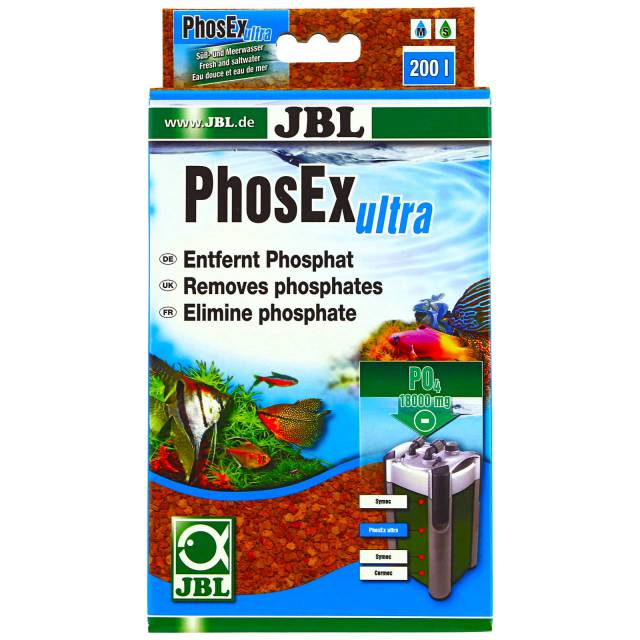Phosphate usually emerges as a decompositional byproduct of organic ballast such as fish excrement, food or dying plant material. It has a very different effect in various aquarium systems (freshwater, saltwater, breeding aquarium, plant aquarium). In normal freshwater aquariums, phosphate is non-toxic to the residents - even in higher concentrations. Especially in aquariums or breeding tanks with a dense fish stock, algae can benefit from the higher phosphate content as well and spread unintentionally, if no or only few fast-growing aquatic plants are available as nutrient rivals. As a benchmark, a content of 3mg/l should not be exceeded.
Plant aquariums and aquascapes use up so much phosphate, that it needs to be supplemented with a phosphate fertilizer, to prevent growth deficits in your aquatic plants. The ideal nutritional values are given here with 0.1 to 1 mg / l of phosphate. Even higher concentrations are tolerable, as long as the remaining nutrients such as nitrogen are kept in a balanced ratio.
In a marine water system, higher phosphate levels can jeopardize the calcium uptake of corals. A too-high PO4 value negatively affects growth and health of corals. The pursued target value in reef aquariums is below 0.05 mg/l.
In aquariums with focus on shrimp breeding, increased phosphate levels have a reputation of being responsible for failed molts. To play it save, shrimp breeders should fall back to phosphate-reducing measures if the values threaten to rise unusually high.
A reduction of the phosphate concentration can best be realized by regular and generous water changes. If these are insufficient or can only be put into practice badly, you need other options. We will introduce some more methods for reducing phosphate in the following.
Inserting aquatic plants

Fast growing aquarium plants use up lots of nutrients, including nitrate and phosphate. This allows for a natural reduction. Furthermore, the plants offer additional hiding- and spwawning opportunities for fish and invertebrates, supply oxygen and optically spice up the aquarium. The introduction of additional plants is therefore rewarding in many ways. Please keep in mind, that - depending on the aquatic plants’ requirements -, they need to be supplied with all necessary nutrients. This benefits their growth immensely. Which nutrients your plants need is described in more detail in this article.
Feeding
You may also want to think about the feeding of your aquarium inhabitants to reduce phosphate. An overfeeding of the animals can easily lead to a higher water load. SO, you should always only feed as much as your fish and invertebrates are able to consume in a reasonable time. Leftovers should be removed. One or two days without food won’t do any harm - except when you are right in the middle of breeding. When feeding frozen food, don’t just chuck the portions into the water - those can be true phosphate bombs! It is much better, to thaw the food in a small sieve and rinse it thoroughly under running water.
Use of a phosphate remover

Phosphate absorbers like JBL PhosEx ultra or Seachem PhosBond are among the chemical filter media. Often, those phosphate remover granules are based on aluminium- or iron hydroxide (GFO). By means of a filter bag, they are placed in area with a good water flow inside the filter where they bind the phosphate in the surrounding water. The capacity of the absorbing agent is limited, and it should be replaced when it no longer has any effect. A regular monitoring by means of a phosphate water test is therefore recommended.
Note: Most phosphate absorbers don’t just bind phosphate but also silicate.